“`html
Understanding Alattaf-LED Technology
Alattaf-LED technology represents a significant breakthrough in the field of solid-state lighting. Its origins trace back to the convergence of research in nanotechnology and photonics, specifically targeting enhancements in light emission efficiency and durability. The basic working principle of Alattaf-LEDs involves the use of advanced semiconductor materials that have been engineered to improve quantum efficiency and reduce energy losses.
Traditional LED technologies predominantly relied on gallium nitride (GaN) as the primary semiconductor material. Alattaf-LEDs, however, integrate innovative composite materials that offer superior electron mobility and thermal stability. This change in material composition is a critical factor behind the higher efficiency and longer lifespan of Alattaf-LEDs. These advanced materials help to maximize light output while minimizing thermal degradation, which has historically been a limiting factor for LED performance.
Engineering advancements have also played a crucial role in the development of Alattaf-LED technology. By employing techniques such as atomic layer deposition and molecular beam epitaxy, researchers have achieved unprecedented precision in the layering of materials. These methods ensure that the semiconductor layers are uniformly thin, enhancing the overall performance and reliability of the LEDs. The result is a lighting solution that not only consumes less power but also provides brighter and more consistent illumination.
In terms of innovations, Alattaf-LEDs boast remarkable improvements in light output and efficiency. One of the key innovations is the use of quantum wells and dot structures to optimize the emission spectrum, thus increasing luminous efficacy. Moreover, the durability of these LEDs is significantly enhanced due to their robust construction and resistance to thermal stress, making them suitable for a wide range of applications including industrial, commercial, and residential lighting.
Several pioneering companies and developers have been at the forefront of advancing Alattaf-LED technology. Leading the charge are firms like Lumiotec, Lumileds, and CREE, which have invested extensively in research and development to push the boundaries of what LED technology can achieve. These organizations have not only contributed to the engineering and material science innovations but have also played a crucial role in bringing Alattaf-LED products to market, thereby ensuring that the benefits of this advanced technology are accessible to a broader audience.
“`
Applications and Future Prospects of Alattaf-LED
Alattaf-LED technology has rapidly found its way into a multitude of industries, demonstrating its versatility and effectiveness. A prominent use case can be seen in consumer electronics, where alattaf-LEDs are now commonly used in devices such as smartphones, tablets, and laptops for display backlighting, enabling sharper visuals and enhanced energy efficiency. The automotive industry has also embraced this innovative technology, utilizing alattaf-LEDs for headlights, tail lights, and interior lighting, offering improved illumination and longer lifespan compared to traditional light-emitting diodes.
In the realm of medical devices, alattaf-LEDs prove invaluable. They are deployed in surgical lighting, diagnostic imaging, and phototherapy equipment, where precise, reliable lighting is crucial. Residential and commercial lighting are not left out, as alattaf-LED fixtures provide uniform lighting, minimal heat emission, and substantial energy savings. Office buildings, street lights, and even smart homes can benefit from these attributes, contributing to lower operational costs and enhanced user experience.
A notable case study can be observed in the city of San Diego, which retrofitted its streetlights with alattaf-LEDs, resulting in a 60% reduction in energy consumption and significant maintenance savings. This success story exemplifies the broader economic and environmental advantages offered by alattaf-LED technology.
Ongoing research and development in alattaf-LED technology are promising. Scientists are exploring next-generation materials and architectures to further enhance efficiency, color quality, and durability. Potential breakthroughs include quantum dot enhancements and innovative phosphor materials, which could revolutionize display and lighting technologies even further.
The future outlook for alattaf-LED technology is overwhelmingly positive. Projections indicate that as advancements continue, the applications will expand into new domains such as advanced horticulture lighting, enhanced vehicle-to-vehicle communication, and sophisticated industrial machine vision systems. Environmental benefits, owing to reduced energy consumption and lower carbon footprints, and significant economic savings align with global sustainability goals.
Challenges do exist, particularly in terms of initial costs and material sourcing. However, innovations in production processes and scalable manufacturing hold the key to overcoming these obstacles, suggesting a future where alattaf-LED technology becomes even more accessible and widespread.

